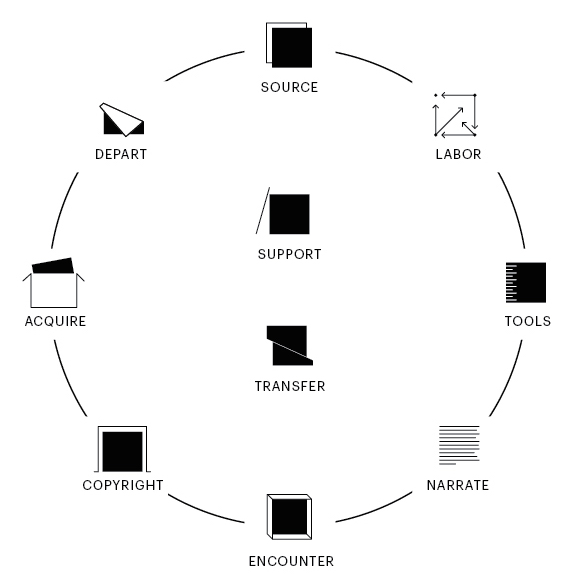Lifecycle Phases and Framework

Our framework relies upon an ecological metaphor to look at the entire “life” of a project, from the moment it is imagined to the moment it is discarded, recycled, or forgotten. We have identified ten components of each project’s lifecycle; we call these phases. A phase is a recognizable stage in the development of a project’s lifecycle. We encourage you to begin by focusing on one phase of the lifecycle of any project to explore a different way of thinking, working, and being.
Support
- the ways your needs are met in order to rest, dream, and work on any project.
Source
- where you obtain materials for a project.
Transfer
- the exchange of resources for goods or labor in your project.
Labor
- the roles you and other people take on in order to create a project.
Tools
- the devices or implements you use in your project.
Copyright
- the legal protection over your intellectual property.
Narrate
- the representation of your project.
Encounter
- the context where your finished project is presented.
Acquire
- the storage, maintenance, and stewardship of your project.
Depart
- when your project is abandoned, destroyed, or repurposed.
The lifecycle framework asks you to “zoom out” and consider a holistic approach to your project. And as you think about what your project will become, the lifecycle framework insists that you also think about who you are becoming through the decisions you make in each phase. Begin by thinking about one phase as an entry point.
Download the full chapter: Lifecycle Phases and Framework as a PDF